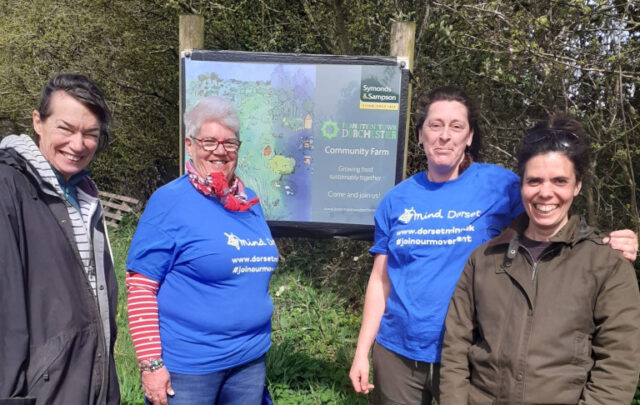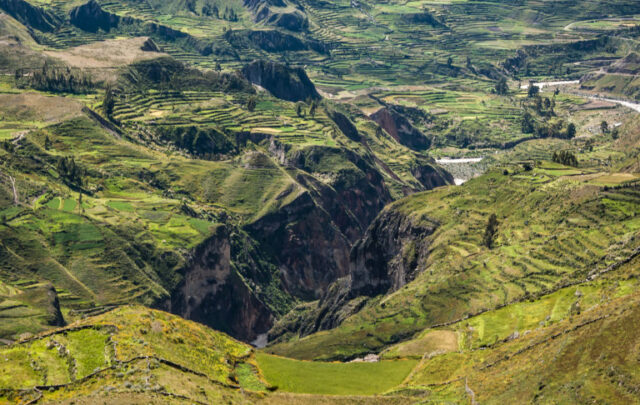Some of the species of life that share this planet really want to be our friends, and have gone to great evolutionary lengths to prove it.
The leaves of Moringa oleifera, or the horseradish tree, originated in the southern foothills of the Himalayas in India, near the source of the sacred Ganges. By the end of the Sumerian Empire it had spread to Pakistan, Bangladesh, Sri Lanka and Afghanistan. Today it is widely cultivated across Africa and Central and South America, Malaysia, Indonesia and the Philippines. It has more Vitamin A and beta-carotene than carrots, more calcium than milk, more iron than spinach, more Vitamin C than oranges, and more potassium than bananas. The many uses for just this one species include alley cropping (biomass production), animal forage (leaves and treated seed-cake), biogas (from leaves), domestic cleaning agents (crushed leaves), blue dyes (wood), fencing (living trees), fertilizer (seed-cake), foliar nutrient (juice expressed from the leaves), green manure (from leaves), gum (from tree trunks), honey- and sugar cane juice-clarifier (powdered seeds), honey (flower nectar), medicine (all plant parts), ornamental plantings, bio-pesticide (soil incorporation of leaves to prevent seedling damping off), pulp (wood), rope (bark), tannin for tanning hides (bark and gum), and water purification (powdered seeds and charcoal).

Moringa seed oil (yield 30-40 percent by weight), also known as Ben oil, is a sweet non-sticking, non-drying oil that resists rancidity. It has been used in salads, for perfume and hair care products and as a sewing machine lubricant. The high protein seeds are eaten green, roasted, powdered, curried, or steeped for tea. Leaves, flowers, seeds, pods, roots, bark, gum, and oil have medicinal properties and have been used since the times of the Egyptians and Greeks variously as antiseptic, pain-reducer and birth control, and to treat arthritis, asthma, bronchitis, common colds, dental caries, dysentery, earaches, epilepsy, fever, headaches, herpes, hypertension, infections, joint pain, low back and kidney pain, lupus, parasites, prostate, rheumatism, scorpion-bites, skin disorders, snakebite, syphilis, thrush, toothaches, typhoid, ulcers, urinary tract infections, and vitamin or mineral deficiencies.
Moringa grows best in dry sandy soils and is especially well suited for drought areas because the tree is in full leaf at the end of the dry season when other foods are typically scarce. Propagated either from seed or by planting limb cuttings, the tree starts bearing edible pods in six to eight months.

Because African villagers are familiar with it, Moringa will likely be among the quarter-million trees Trees and Life will start in each of the 90 villages in Casamance, Senegal over the next 3 years. Eventually Trees and Life will create six central tree nurseries to support the network of 60 village-managed nurseries. From each women-directed village cooperative, the organization will offer production and marketing support and micro-finance for local forestry enterprises (fruit products, bee-keeping, gum arabic, medicinal extracts, salves and decoctions, guinea fowl, etc.).
For Trees and Life the final phase will be monitoring and reporting the progress and integrating the data into the Total Cooling Project of the NASA Land Atmosphere and Resilience Initiative. As added incentive, a prize is being offered to the village whose rate of survival of the trees is strongest after 3 and 5 years, respectively. Nicolas Metro told a gathering at the Climate Summit in Copenhagen he hopes to determine the impact on temperature and hydrological cycle at the local, regional and global level. His home organization in France, Kinomé (Japanese for “the viewpoint of the tree”), is already planning the next greater scale for Trees and Life in the tropics, planting 15 billion trees over ten years.
The Kinomé plan is that eventually the villagers can be paid for the carbon sequestered by the trees and the “carbon avoided” by protection of the existing forests that would have been deforested. Ground readings taken in several forests near Casamance recorded carbon at 260 tons of CO2 per hectare, including 74 tons in above-ground biomass (30 percent) and 186 tons in the soil (70 percent). That survey provides a useful baseline from which to calculate family-managed carbon sequestration services in the future.
In 2004, the Nobel Peace Prize was awarded to Wangari Maathai, a Kenyan environmental and political activist. In the early 1970s, it became evident to Maathai that the root of most of Kenya’s social problems was environmental degradation. She connected her ideas of environmental restoration to providing jobs for the unemployed by founding Envirocare, a company that employed people to plant trees. On June 5, 1977, marking World Environment Day, she led a march from downtown Nairobi to the outskirts of the city where she planted seven trees in honor of historical community leaders. This was the first “Green Belt” in what would become the Green Belt Movement. Maathai encouraged Kenyan women to start tree nurseries using heirloom native species. With money from the United Nations Voluntary Fund for Women, she was able to pay a small stipend to the women who planted seedlings and to the husbands and sons who were literate and able to keep accurate records of success rates.
Wangari Maathai’s struggle, in which she was repeatedly arrested while planting trees, beaten by police and paramilitary groups, placed under house arrest, besieged in her home, and periodically forced into exile, was ultimately vindicated when, in 2002, her Rainbow Coalition defeated the ruling party of Kenya. Within her district, Maathai won 98 percent of the vote. She became Assistant Minister for Environment and Natural Resources and founded the Mazingira Green Party of Kenya to support candidates who embodied the ideals of the Green Belt Movement.
In the 1990s, when the Green Belt movement planted 20 million trees, that seemed like a very large number. In 2006, the U.N. Environmental Program launched a “billion tree campaign” for world plantings by the end of 2007. That goal was surpassed in 2005 and had to be raised to 7 billion by the end of 2009 (one tree per person). Plantings of 6.3 billion trees were achieved, but no one knows how many of those trees actually survived. In Palestine, where Murad Al Khufash led an effort to plant olive trees under the sponsorship of a Global Village Institute trees-for-airmiles program, two years of plantings were chain-sawed to make room for Israeli settlements in the West Bank. Such experiences are not uncommon in places where the value of forests is still of far lower priority than population and commercial demands.
Still, tree planting has been gaining momentum, and a friendly rivalry has begun. Pakistan has apparently set a record for aquatic tree plantings, with volunteers wading through chest high water and knee-deep mud to plant an average of 1,800 mangroves per day, each. In a single day and without any mechanical equipment, volunteers planted 541,176 young mangroves in the Indus River Delta to best the previous Guinness World Record of 447,874 trees in a day, held by India.
Richard Garstang, head of the program, said, “We hope that tree planting competitions will become as popular as cricket matches.”
Little by little, the treeplanters are growing forests. The forests are halting desertification and preserving shorelines. They are sequestering carbon in their trunks, leaves and roots, rather than the atmosphere. They are feeding a hungry population and saving wildlife at the same time. They are restoring the rain cycles and feeding springs and rivers. When we feel overwhelmed by the collapse all around us — the death song of Gaia — we would do well to remember the story of the hummingbird Wangari Mattaai tells to children:
“The story of the hummingbird is about this huge forest being consumed by a fire. All the animals in the forest come out and they are transfixed as they watch the forest burning and they feel very overwhelmed, very powerless, except this little hummingbird. It says, ‘I’m going to do something about the fire!’ So it flies to the nearest stream and takes a drop of water. It puts it on the fire, and goes up and down, up and down, up and down, as fast as it can. In the meantime all the other animals, much bigger animals like the elephant with a big trunk [that] could bring much more water, they are standing there helpless. And they are saying to the hummingbird, ‘What do you think you can do? You are too little. This fire is too big. Your wings are too little and your beak is so small that you can only bring a small drop of water at a time.’ But as they continue to discourage it, it turns to them without wasting any time and it tells them ‘I am doing the best I can.’”





